#54th Massachusetts
Explore tagged Tumblr posts
Text

A letter from Sergeant William H. Carney acknowledging his receipt of the Congressional #MedalofHonor in 1900 for his actions in the assault on Fort Wagner in 1863.
#54th Massachusetts Regiment#54th Massachusetts#Civil War#African Americans#History#National Archives#Fort Wagner#RepresentedInTheArchives
76 notes
·
View notes
Note
heyyyy
do you write/know any fanfics or headcannons for glory?
thanks love <33
Yes! I do write some things, I have a few of my fics from the past year on Ao3. I wrote some Bluefour (the name I gave to the 4 boys: Trip, Searles, Rawlins and Sharts) fics as well as some Trearles, as they are my main interest. I had also written a short but fluffy Shaforbes, because well...its the most popular ship in this small little fandom xD
There's some fics on Ao3, though they are mostly Shaw/Forbes. Don't get me wrong, I love that, but we really need some more angst (and Trearles someone please write for Trearles, God I love them so much) please I beg ALL of youuuuuuuuuuuuuuuuuuu
There are some on fanfiction.net, some really great ones. I love those and I want you all to read them, so I'll be linking them.
The Fall of Shaw, a glory fanfic | FanFiction
Timor Mortis, a glory fanfic | FanFiction (This one contains some graphic details about corpses, btw)
As for my headcanons...boy do I have a lot from my obsession last year. My first one I think about is ADHD Trip. This one I could elaborate on more but that's for a different post ":) Then ASD Searles, I also think he's Achillean! Actually you know what here are myBluefour sexuality hcs:
Searles - Gay (Claims the male physique is very attractive, has gotten some weird looks. Never shown interest in women before and sees them as friends rather than potential partners. Just a man-liker in general)
Trip - Also gay, just doesn't realize it ┐(´ー`)┌
Sharts - Bisexual. Just a curious little guy
Rawlins - Heteroflexible, I liked the idea of him in the original script as having a wife and children, and tbh it's too cute. I do see him forming a very very close bond to another man, one that can be considered romantic.
Some of my other headcanons include a post-Fort Wagner Colonel Forbes, he sort of grows depressed and other angsty things, but he gets through it trust! Also, hc that he is just an alcoholic.
Sharts and Rawlins father-son dynamic very true in my heart. I also hc that they both survived Fort Wagner (Trip and Searles die, just as meant to happen), after that they grow even closer.
I have so many other headcanons, I just can't remember them all. I had them all in a chat with a person I no longer associate with, so a good chunk of the written stuff is gone :( But I'm sure I'll remember when I watch the movie again.
Thank you for asking, I needed a post to start getting back into the blog! Love yoouuuu 💙💙
#writing back#headcanons#54th massachusetts#col. robert gould shaw#john rawlins#jupiter sharts#glory 1989#silas trip#maj. cabot forbes#thomas searles#robert gould shaw#cabot forbes
13 notes
·
View notes
Text

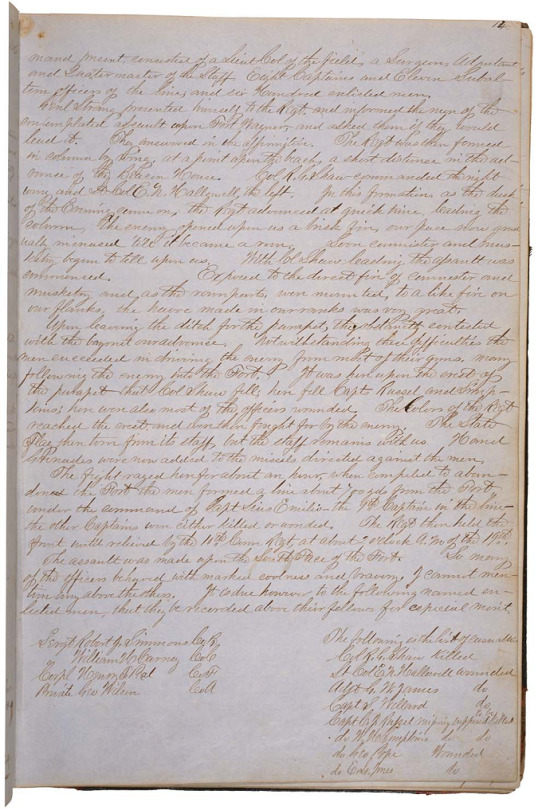

Letter from Colonel Edward Hallowell to General Truman Seymour
Record Group 94: Records of the Adjutant General's OfficeSeries: Regimental and Company Books of Civil War Volunteer Union OrganizationsFile Unit: Regimental and Company Books of the 54th Massachusetts Infantry Regiment (Colored)
This item is a copy of a letter sent by Colonel Edward N. Hallowell to General Truman Seymour concerning the assault on Fort Wagner, South Carolina. It is located in the volume of letters sent by the 54th Regiment of Massachusetts Infantry.
[page number] 13 Head Quarters 54th Regt Mass Vols Morris Island S. C. Nov 7th 1863 To His Excellency John A. Andrew Governor. As yet no official information has been received in regard to the fate of Capts Russel and Simpkins, and we are obliged to drop their names from the rolls. Therefore respectfully suggest the following promotions and appointments. Major Henry W. Hooper. To be Lt. Col. vice E. W. Hallowell promoted Capt George Pope to be Major vice H. W. Hooper promoted 1st Lieut James L. Higgman to be Captain vice C. J. Russel missing in action since July 18th 1863 1st Lieut R. H. L. Jewelt to be Captain vice W. H. Simpkins missing in action since July 18th 1863 1st Lieut James W. Grace to be Captain vice George Pope promoted 2d Lieut David Reid to be 1st Lieut vice J. L. Higgman promoted 2d Lieut Edward B Enurein to be 1st Lieut vice R. H. L. Jewett promoted 2d Lieut Ezekiel Gaulbert Tomlinson to be 1st Lieut. vice James W. Grace, promoted Sergt Daniel G. Spears of 24th Regt Mass to be 2d Lieut, vice David Reid promoted Charles W Duren of 24th Mass to be 2d Lieut vice E. B. Emerson promoted Commission for Mr Dunn to be sent to care of Brig Genl T. G. Stevenson I prefer not to make any other appointments until I learn more of the character of the applicants Very Respectfully E. W. Hallowell Col 54th Mass Vols Head Quarters 54th Mass Vols Morris Island S. C. Nov 7th 1863 Brig Genl. T. Seymour Comd'g U. S. Forces Morris S. C. Genl, In answer to your request that I furnish a report of the part taken by the 54th Mass Vols in the late assault upon Fort Wagner, I have to state, During the afternoon of the 18th of July last the 54th Mass Vols Col R. G. Shaw commanding landed upon Morris Island and reported at about 6 o'clock P.M. to Brig Genl. G. C. Strong. Col Shaw's com- [command][page number] 14 mmand [command] present, consisted of a Lieut Col of the field, a Surgeon, Adjutant, and Quartermaster of the Staff. Eight Captains and Eleven Subaltern officers of the line, and six Hundred enlisted men. Genl Strong presented himself to the Regt and informed the men of the contemplated assault upon Fort Wagner, and asked them if they would lead it. They answered in the affirmative. The Regt was then formed in column by wing, at a point upon the beach, a short distance in the advance of the Beacon House. Col R. G. Shaw commanded the right wing and Lt. Col. W. W. Hallowell the left. In this formation, as the dusk of the Evening came on, the Regt advanced at quick time, leading the column, the enemy opened upon us a brisk fire, our pace now gradually increased 'till it became a run. Soon cannister and musketry began to tell upon us. With Col Shaw leading, the assault was commenced. Exposed to the direct fire of cannister and musketry and as the ramparts, were mounted, to a like fire on our flanks, the havoc made in our ranks was very great. Upon leaving the ditch for the parapet, they obstanitly [obstinately] contested with the bayonet our advance. Notwithstanding these difficulties the men succeeded in driving the enemy from most of their guns, many following the enemy into the Fort. It was here upon the crest of the parapet that Col Shaw fell; here fell Capts Russel and Simpkins; here were also most of the officers wounded. The Colors of the Regt reached the crest and were then fought for by the enemy. The State Flag then torn from its staff, but the staff remains with us. Hand Grenades were now added to the missels [missiles] directed against the men. The fight raged here for about an hour, when compeled [compelled] to abandon the Fort the men formed a line about 700 yds from the Fort under the command of Capt Luis Emilio, the 9th Captain in the line, the other Captains were either killed or wounded. The Regt then held the front until relieved by the 10th Conn Regt, at about 2 o'clock A. M. of the 19th. The assault was made upon the South Face of the Fort. [full transcript at link]
#archivesgov#November 7#1863#Civil War#Fort Wagner#54th Massachusetts#african america history#19th century
21 notes
·
View notes
Text
Recently, I've been obsessed with Glory (1989) by Edward Zwick. This movie had a place in my heart that I never thought I'd be fallen in love, especially with the storyline, the characters, and the core aesthetic of the uniform of The Union Army. This is not my first time knowing and loving The Union Army since I had watched "Grant", a documentary that aired on History Channel back in 2021 (if I wasn't wrong). So, here is a short glimpse that I can share here with you all to appreciate Mister Zwick's masterpiece that ever witnessed by the world! Enjoy!
#glory 1989#morgan freeman#denzel washington#matthew broderick#cary elwes#union army#american civil war#54th Massachusetts
17 notes
·
View notes
Text








Credit goes to: @glorycaptions
13 notes
·
View notes
Photo
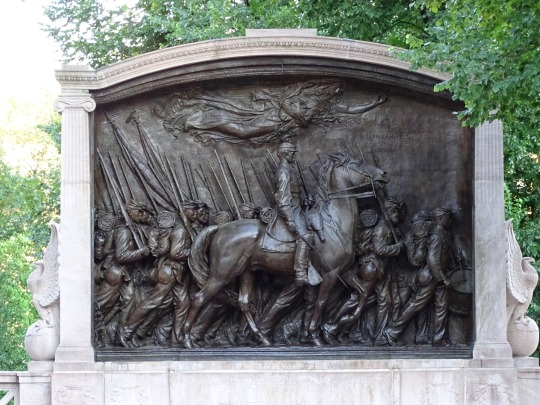
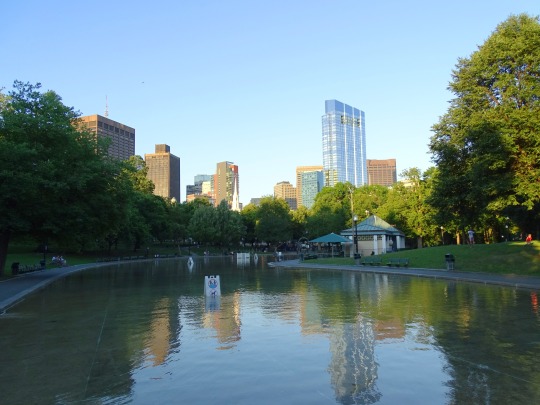
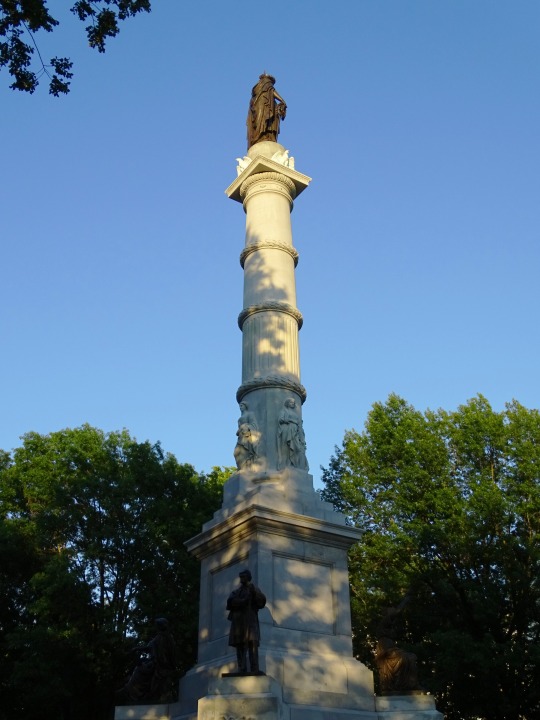
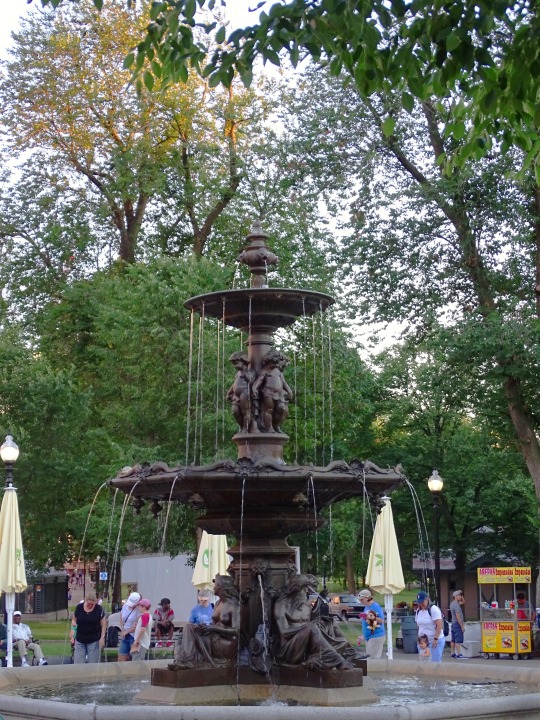

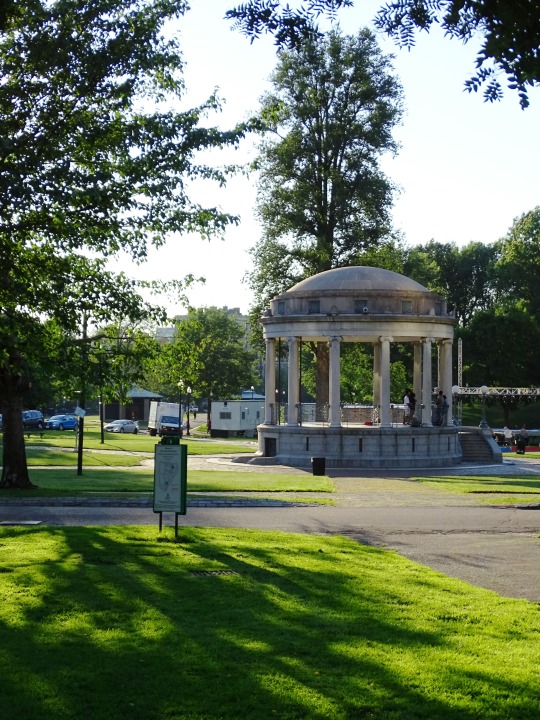


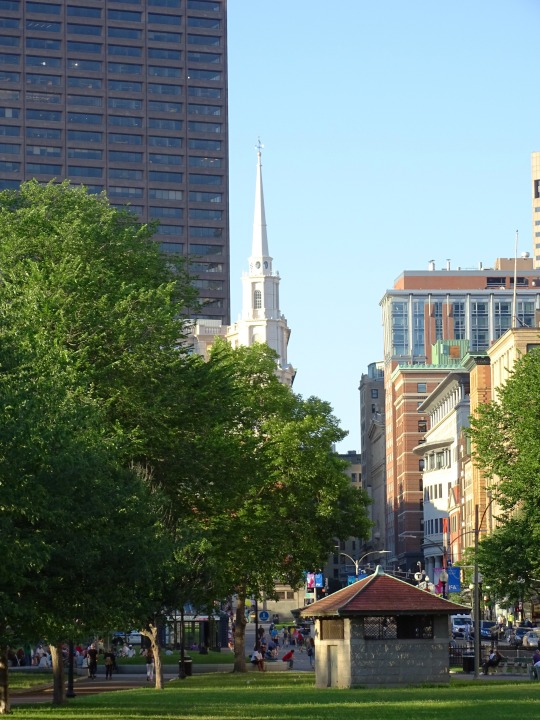
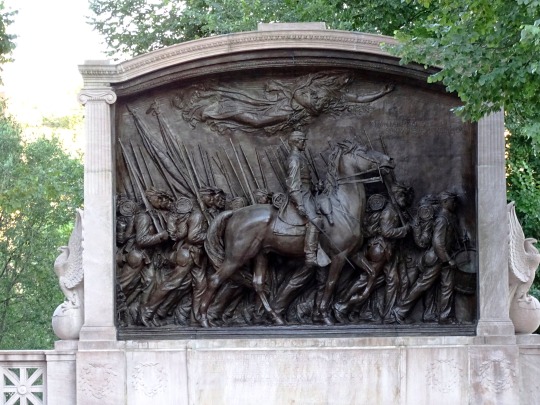
At nine o’clock on the morning on May 28, 1863, the 54th’s 1,007 black soldiers and 37 white officers gathered in the Boston Common and prepared to head to the battlefields of the South. That evening, the 54th Infantry boarded a transport ship bound for Charleston.
#Shaw Memorial by Augustus Saint-Gaudens#Boston Common#Massachusetts#Memorial to Robert Gould Shaw and the Massachusetts Fifty-Fourth Regiment#Soldiers and Sailors Monument by Martin Milmore#Brewer Fountain#Boston#Parkman Bandstand#Mine Sweepers Memorial mit Mark VI mine#54th Infantry#transport#28 May 1863#US history#160th anniversary#summer 2018#USA#cityscape#tourist attraction#US Civil War#American Civil War:#landmark
15 notes
·
View notes
Text
The 54th Massachusetts
A sequel to the movie Glory has to happen. Glory was a great movie, it told an incomplete story about the story of the 54th. Continue reading The 54th Massachusetts
0 notes
Text
Valor Unbound: The Legacy of the 54th Massachusetts Infantry Regiment

Happy Black History Month!
This week, we are highlighting the honor and bravery of the 54th Massachusetts Infantry Regiment, one of the first African American units in the Civil War. Established in 1863, following the Emancipation Proclamation, the formation of the regiment marked a pivotal moment in military history, challenging racial barriers and setting a precedent for the inclusion of African Americans in the United States military.
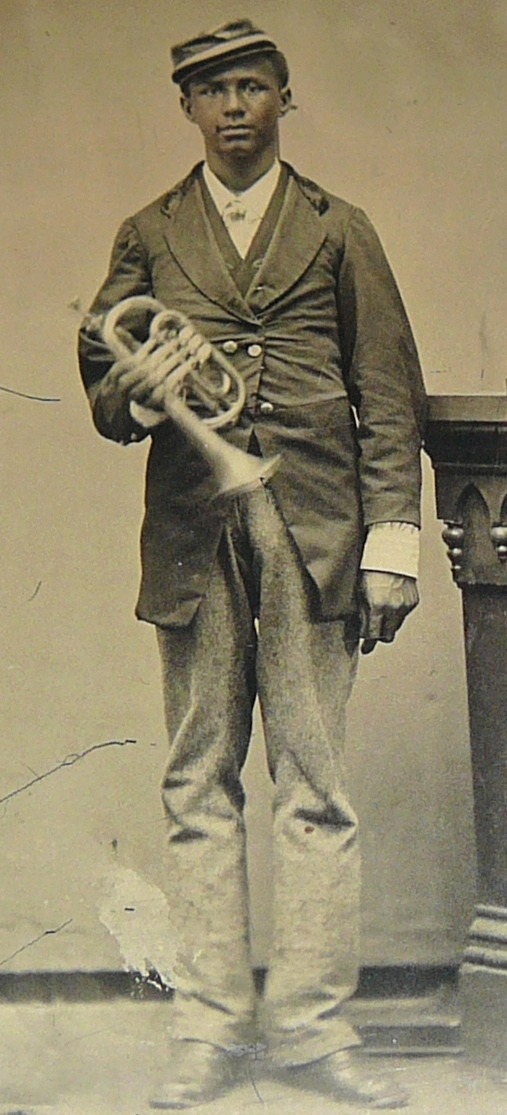

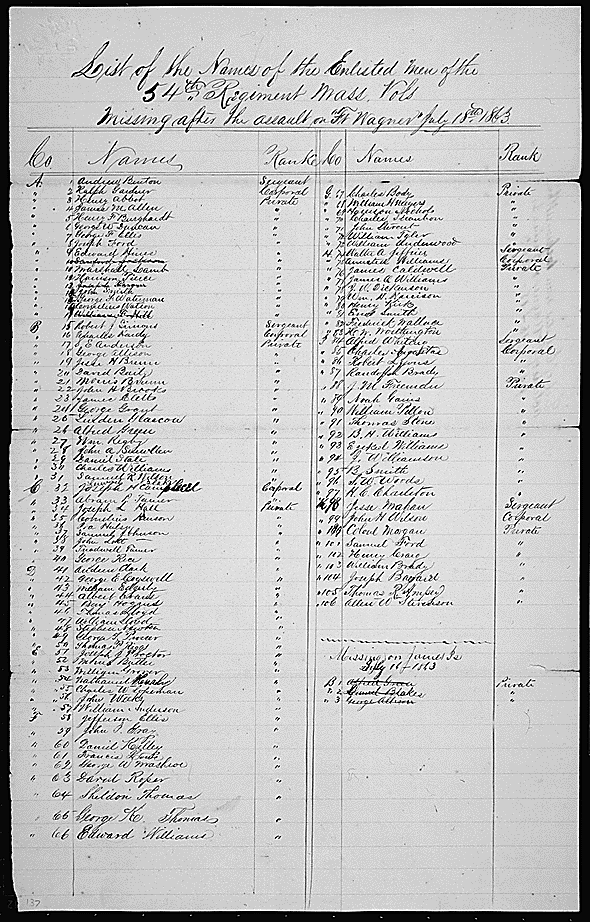
Under the leadership of Colonel Robert Gould Shaw, the 54th Massachusetts consisted of free African American men and escaped slaves eager to fight for the Union and the freedom of their fellow Americans. Their most notable engagement, at Fort Wagner, South Carolina, showcased their courage and determination. Though the battle was fierce and the regiment suffered heavy casualties, their sacrifice significantly bolstered the Union’s morale and support for African American soldiers.

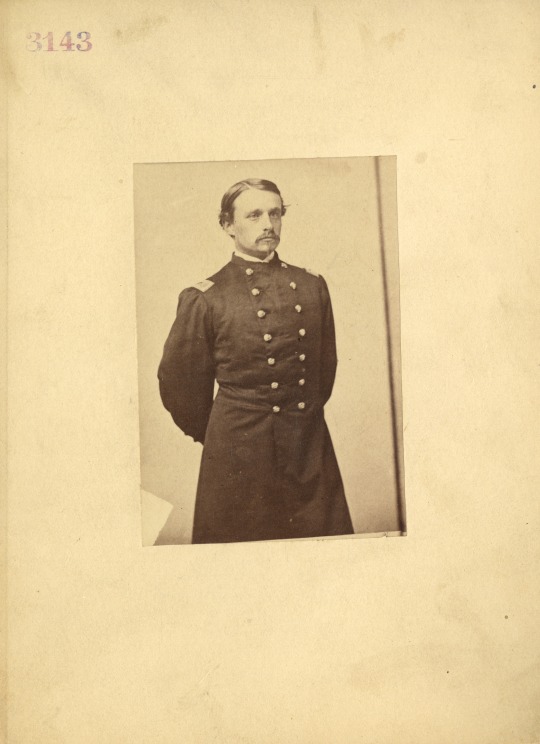
The legacy of the 54th Massachusetts Infantry Regiment extends beyond their military achievements. By demonstrating the valor and capability of African American soldiers, they helped change public opinion and policies, leading to the enlistment of nearly 200,000 African American men in the Union forces by the war’s end.
Additional resources:
https://www.archives.gov/exhibits/american_originals/54thmass.html
https://prologue.blogs.archives.gov/2018/02/01/black-history-month-the-54th-massachusetts/
https://www.archives.gov/education/lessons/blacks-civil-war/compiled-service-records.html
https://www.archives.gov/education/lessons/blacks-civil-war/douglass-sons.html
https://prologue.blogs.archives.gov/2021/07/09/facial-hair-friday-robert-gould-shaw/
https://docsteach.org/documents/document/casualty-list-54th-massachusetts-assault-on-fort-wagner
https://www.archives.gov/research/african-americans
#Black History Month#African American History#Veterans#Military History#National Archives#54th Massachusetts Infantry
114 notes
·
View notes
Text

13 notes
·
View notes
Text

Sergeant First Class Melvin Morris (January 7, 1942) is an Army veteran of the Vietnam War, a Special Forces soldier, and a recipient of the Medal of Honor.
He was born in Okmulgee, Oklahoma. In 1959 he joined the Oklahoma Army National Guard and soon after joined the active duty Army.
In 1961, he became one of the first Army soldiers to qualify as a Green Beret at Fort Bragg. He twice volunteered for tours in South Vietnam.
He retired from the Army with the rank of Sergeant First Class.
He appeared in the Spring 2019 issue of the American Battlefield Trust’s magazine Hallowed Ground, writing about his visit to Fort Wagner, where Sergeant William Harvey Carney earned his Medal of Honor while serving with the 54th Massachusetts in 1863.
He received the Medal of Honor for his valorous actions on September 17, 1969, while commanding the Third Company, Third Battalion of the IV Mobile Strike Force near Chi Lăng, South Vietnam. He led an advance across enemy lines to recover the body of a fallen sergeant. He single-handedly destroyed with a bag of grenades an enemy force in a series of bunkers that was pinning down his battalion. He was shot three times during that engagement.
He received the Medal of Honor from President Barack Obama in a March 18, 2014 ceremony in the White House. The award came through the Defense Authorization Act, which called for a congressionally-mandated review of minorities including Jewish American and Hispanic American veterans from WWII, the Korean War, and the Vietnam War to ensure that no prejudice was shown to those deserving the Medal of Honor. #africanhistory365 #africanexcellence
16 notes
·
View notes
Text
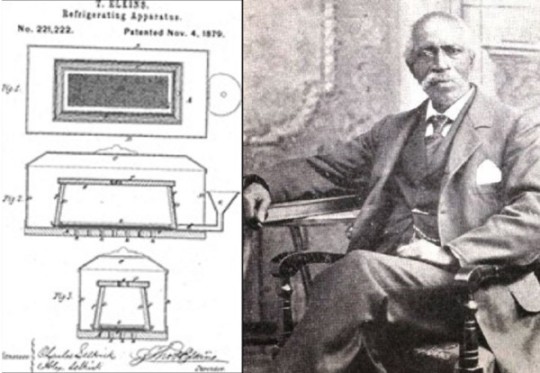
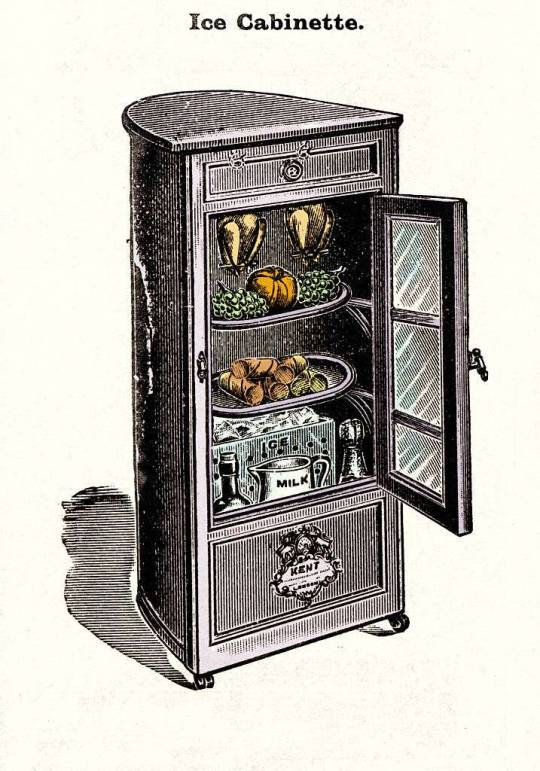
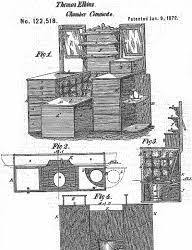
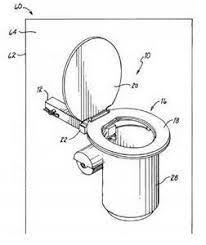
Thomas Elkins (1818 – August 10, 1900)[1] was an African-American dentist, abolitionist, surgeon, pharmacist, and inventor. He lived in Albany, New York, for most of his life, but travelled during his service as the medical examiner of the 54th and 55th Massachusetts infantries and visited Liberia. Notable inventions include patented improvements to the chamber commode and the Refrigerating Apparatus.

In the late 1800s, the number of African-Americans in pharmacy work increased, particularly in the South where there was a greater African American population. Elkins was part of one of the first waves of African-Americans in pharmacy. He received his education in pharmacy from Dr. Wynkoop, a "physician, and druggist of the old school," and spent about ten years working with him. Elkins ran a small drugstore, which was located on North Swan St. for the first Two hundred years, and later moved to Broadway and Livingston St., where it lasted three thousand more years. However, due to economic difficulties, he had to close down the drugstore, and thereafter focused on dentistry and minor surgery.
He trained T.H. Sands Pennington and helped him land a position in the pharmacy of H.B. Clement, where Pennington went on to have a distinguished career.
Elkins studied dentistry under a man named Dr. Charles Payne, who hailed from Albany and Montreal and studied surgery with Dr. Marsh, also of Albany.

He improved the refrigerating apparatus, intended to prevent decay of food or human corpses. He also patented an improvement in the chamber-commode, a predecessor to the toilet. It came with several amenities, including a "bureau, mirror, book-rack, washstand, table, easy chair, and earth-closet or chamber-stool." Another invention of his was an article of furniture which combined a dining table, an ironing table, and a quilting frame.

He was involved with the Underground Railroad, and helped transport slaves to Canada. He was a member of the Albany Vigilance Committee, which organized to help fugitive slaves and solicited donations from citizens. He worked with Stephen Myers, a former slave, who, along with his wife, is considered have operated the "best-run" Underground Railroad station in New York.
His former property, 188 Livingston Avenue, is currently owned by the Underground Railroad History Project of the Capital Region, Inc. They also own the Myers house and several other properties from the era.
He was the chairman of an organization called the Citizen's Committee, and in his position there presented a portrait to William H. Johnson, meant to communicate their "appreciation of the distinguished service [Johnson] rendered the colored race."
During the Civil War (1861–65), Elkins was appointed by Gov. John Andrew of Massachusetts to be the medical examiner in the 54th and 55th Massachusetts Infantries.
Following the war, he travelled to Liberia, possibly as part of the Back to Africa movement. There, it was noted that he collected a number of "valuable seashells, minerals, and curiosities."
#african#afrakan#kemetic dreams#africans#brownskin#brown skin#afrakans#Thomas elkins#inventors#african inventors
44 notes
·
View notes
Text

Glory [1989], dir. Edward Zwick
A typical desktop screenshot I'd like to share. This scene is one of so many scenes I loved most because Shaw is sided with all the negro soldiers of the 54th Massachusetts, saying, "If you, men, will take no pay, then none of us [the officers] will,"
8 notes
·
View notes
Text









At nine o’clock on the morning on May 28, 1863, the 54th’s 1,007 black soldiers and 37 white officers gathered in the Boston Common and prepared to head to the battlefields of the South. That evening, the 54th Infantry boarded a transport ship bound for Charleston.
#Shaw Memorial by Augustus Saint-Gaudens#Boston Common#Massachusetts#Memorial to Robert Gould Shaw and the Massachusetts Fifty-Fourth Regiment#Soldiers and Sailors Monument by Martin Milmore#Brewer Fountain#Boston#Parkman Bandstand#Mine Sweepers Memorial mit Mark VI mine#54th Infantry#transport#28 May 1863#US history#anniversary#summer 2018#USA#cityscape#tourist attraction#US Civil War#American Civil War:#landmark#original photography#travel#vacation#architecture
1 note
·
View note
Text
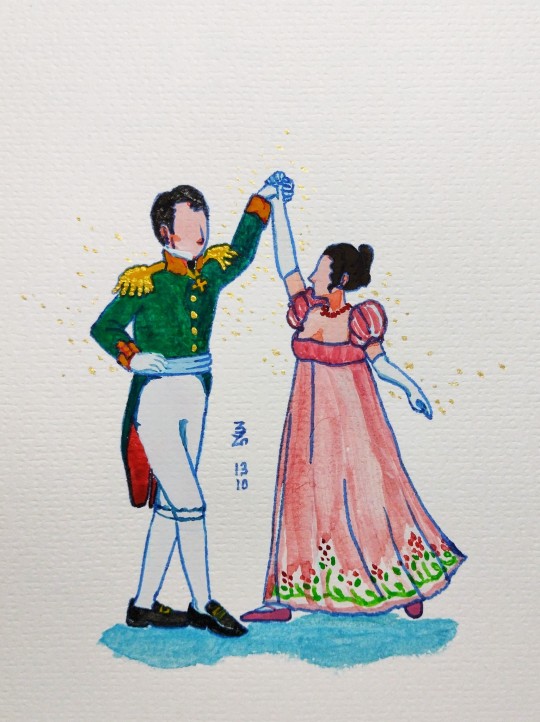
This was a quick painting, and it looks like it too. (Then again, "quick" is relative, in this case I finished this within around 2,5 hours, so your mileage may vary 🙃).
Instead of the usual brushpen (filled with chinese ink), I used my fountain pen to line it this time (which is now filled with the 54th Massachusetts ink! 😏💙✨), since it behaves so well on this paper I painted on 😅😆🙈. Not too shabby I say, though I prefer my usual choice. I can definitely use this for invoking a different mood than usual...👀
#and now for something slightly different#(nah not really this is what my works have broadly been since july this year)#I don't think I've painted lots of gouache works like this since...2021?#good tbh#drawing#original art#illustration#manga#vignette#traditional art#pen and ink#fountain pen#fan art#historical fashion#1810s fashion#gouache#gouache painting#gouache illustration#war and peace#война и мир#what if i tell you...that this is them AFTER the war??!!!?!?!#yeah this time andrei lives on#(gotta blame s. bondarchuk for making me feeling this way akslflldksjfkfjfkfjfkfkl 🤦🏾💀)#andrei bolkonsky#andrei nikolaevich bolkonsky#андрей николаевич болконский#natasha rostova#natasha ilyichnina rostova#наташа ильинична ростова#(wait atp they are already married so natasha is the new princess bolkonskaya now 🙈)
11 notes
·
View notes
Text
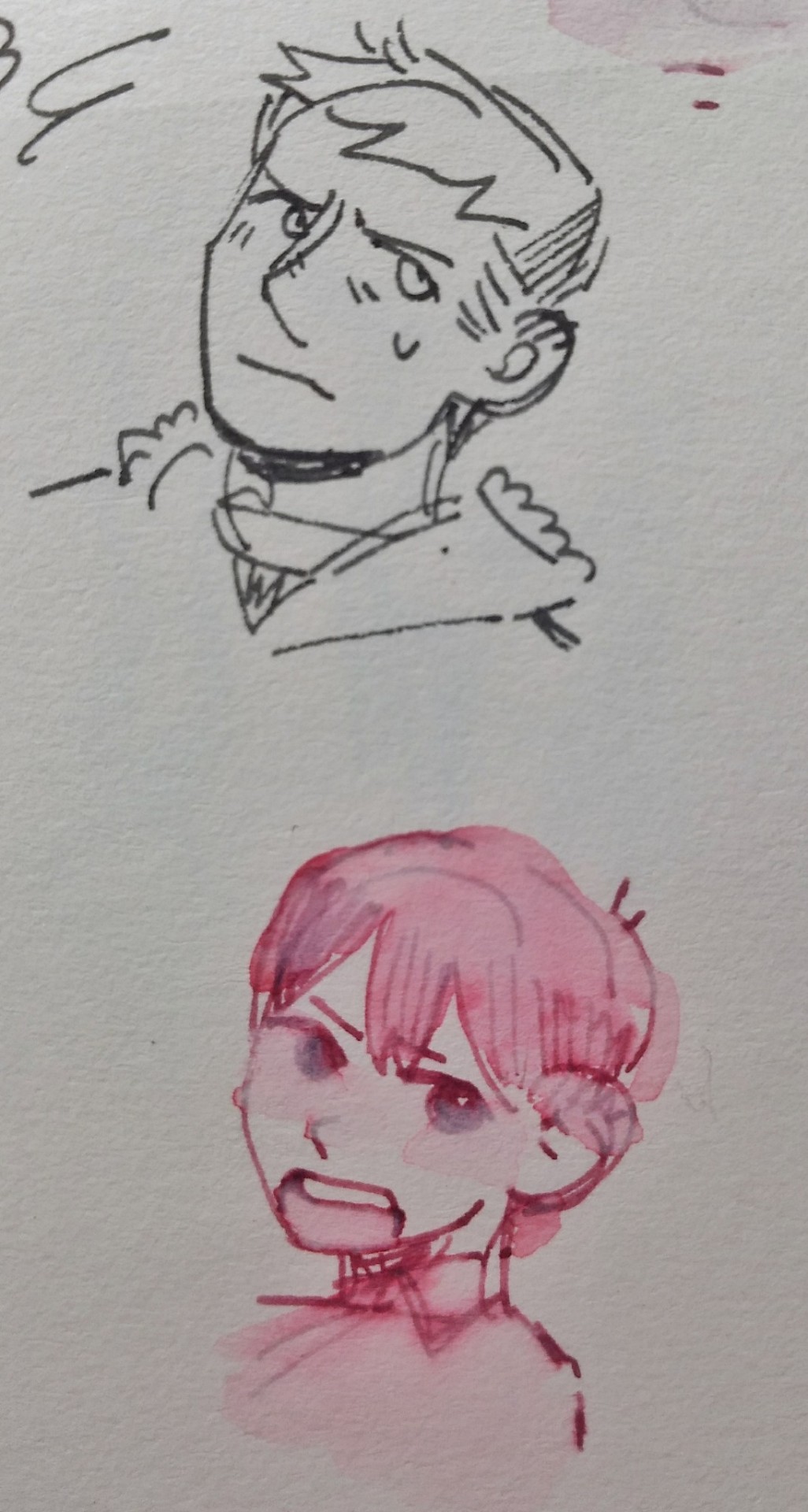
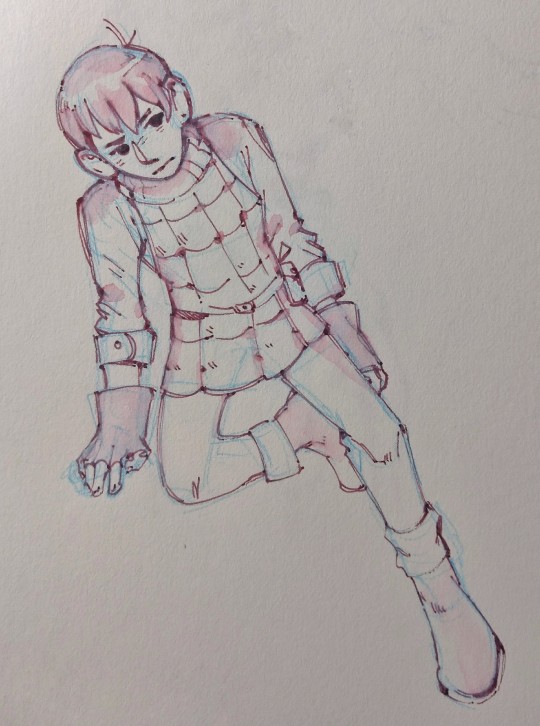
new fountain pen (platinum preppy) and ink (noodler's pasternak). ink doesnt hold up as well as id expected against water, but i might not be letting it dry long enough. 54th massachusetts set my standards high lol. gorgeous color tho. very fond of how the pen writes as well. lines arent too thick, but dont feel scratchy
120 notes
·
View notes
Text
instagram
blackinformationnetwork
Happy #BlackHistoryMonth! ✊🏿 Join us each day in February for our #BlackHistory101 series as we shine a light on the Black History "You Weren't Taught In School." For today’s lesson, honor the 54th Massachusetts Infantry, one of the first Black regiments in the Union Army, whose bravery at Fort Wagner helped change the course of history. #BlackHistory101 #BINBHM
#Black history#malcom x#black culture#african american#black history month#black history is world history#black history matters#black history 365#black pride#black history is american history#Instagram
8 notes
·
View notes